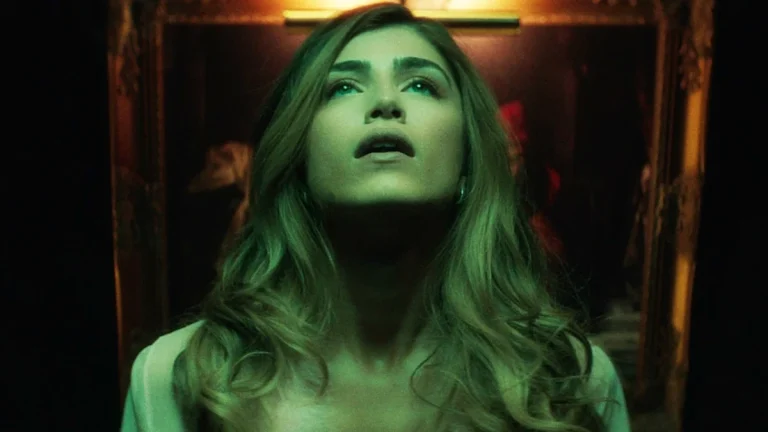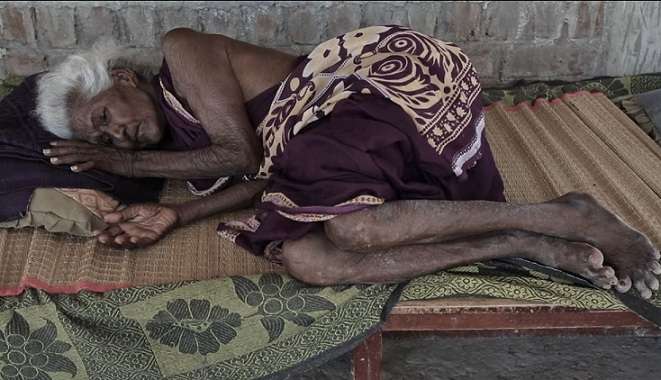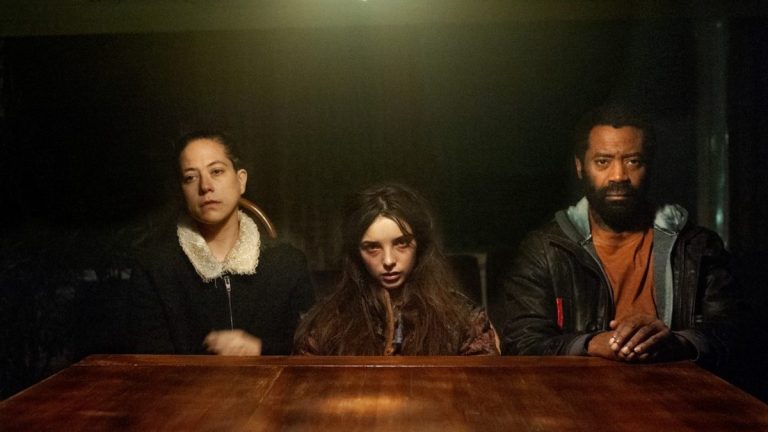“The Second Time Around” (2025) emerges like a whispered confession in the rain, a short film that lingers in the spaces between what is said and what is felt, between the world we see and the one we remember. Jack Howard, stepping away from his comedic roots, sculpts this moment of encounter in a way that feels like both a promise and a visit from the past: the drizzle, the darkened pavement, the sigh of neon and streetlamp outside a small London café, all become more than setting – they are mood, they are memory.
The narrative is simple: a waitress closing up (Hannah Onslow) is confronted by a mysterious older woman (Caroline Goodall), but it is the heaviness of glances, the creak of café doors, the smell of rain, that swell into something mythic in miniature. Onslow’s Elle is haunted but precise: there is fatigue in how she moves, waits, and closes shutters. Goodall’s older woman carries a past that seems too vast for her quietness, every gesture suggesting love and regret, longing and loss. Howard trusts small gestures: a hand on a teacup, eyes that shift in lamplight, silence drawn out – these become the weight of sorrow and possibility.
Jack Howard’s “The Second Time Around” seduces you into its rain‑soaked London café not through spectacle but through the exquisitely calibrated ambiguity of human ache. From the moment Elle (Hannah Onslow) is closing up for the night and is joined by the mysterious older woman (Caroline Goodall), the film refuses to ease. It doesn’t tell you everything, and that is its strength: Howard’s choice to withhold – details of the older woman’s identity, the full weight of Elle’s past, the precise boundary between memory and possibility – makes the short not just a story but a mirror for your own unspoken regrets.
The way “The Second Time Around” uses its framing and pauses feels almost defiant, a refusal to let the audience settle. In the opening minutes, when Hannah Onslow’s Elle is closing the café, the wide aspect ratio (2.35:1) gives Howard space to breathe: you see reflections in rain puddles, the distorted glow of street lamps, wet asphalt that mirrors Elle’s internal tremor.
Her eyes catch the café light — soft, golden, yet forgiving none of the edges — as she hesitates, wondering whether the older woman (Caroline Goodall) is a ghost, a memory, or some unacknowledged version of herself. The rain isn’t mere weather; it’s emotional geography, washing the edges of scenes, mingling inside with outside, and erasing certainty. Outside is cold, fragmented, open, reflected, looming; inside is warm but shadowed, intimate yet fraught with unsaid things.
Onslow’s performance is built in pauses: the way she sets down a teacup with a little too much force, lingering on the sound echoing in the near‑silence; the way she folds her coat over a chair, pulling warmth in around her; her lips parting, but no words coming. Goodall’s presence plays against Elle’s in those moments: the older woman speaks in cracks, time heavy in her voice, her words sometimes tremulous, sometimes unnerving. Between them, gestures matter more than speeches. Light pools under lamps, the rain tracks down windows, and steam rises.
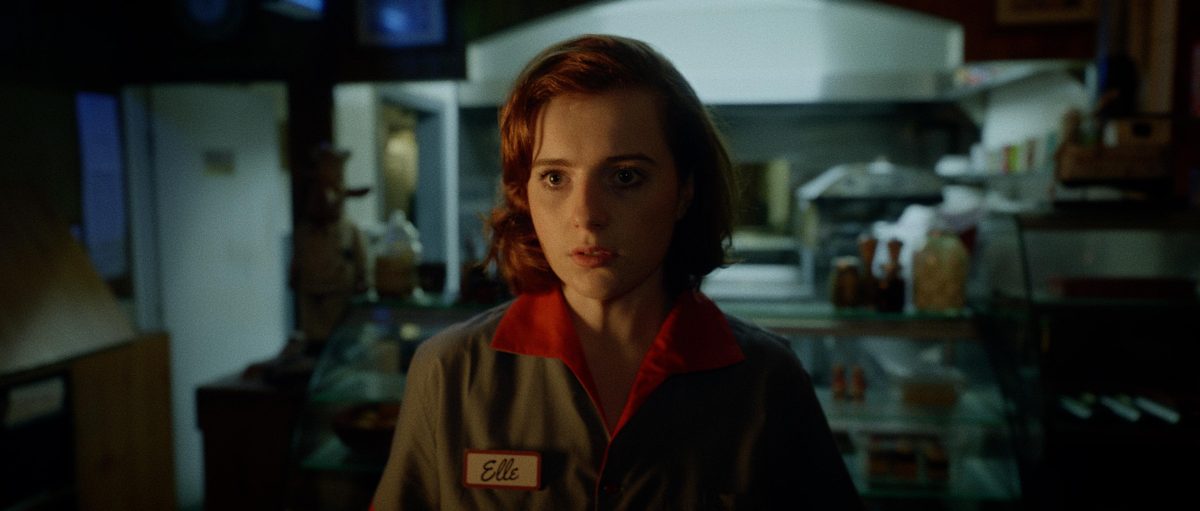
Howard doesn’t need flashy visual effects; he uses quiet: the café closing, the door’s click, the dripping water, the shiver of reflection in a car’s headlight. And when the film edges toward its close, there’s no clean reveal. Instead, Elle looks up. Maybe she sees hope, maybe guilt — maybe simply what she’s been avoiding. The moment is unforced, and it unsettles. It lingers. To me, the film is brave precisely in what it withholds. Life doesn’t always offer explanations, and grief doesn’t always find resolution. Howard’s artistry lies in trusting that the audience carries their own unanswered questions — and it’s there that the ache cuts deepest.
Elle and the older woman sit across from each other in the dimming warmth of the café as the day bleeds into night, their conversation a fragile lattice of half-uttered confessions, silences that speak louder than sentences, and the quiet hum of closing time that makes their words feel both intimate and transient, as if they are suspended in a space outside ordinary hours. Every pause, every sip of tea, every glance toward the window or the umbrella resting against the chair carries the weight of unspoken histories, of lives lived in parallel yet never fully intersecting, and it is in this careful orchestration of small gestures that the film finds its subtle power.
Elle’s hesitation as she considers letting the older woman in is not merely a reluctance to share space but a careful calibration of trust, a recognition that intimacy can be both a balm and a burden, that vulnerability demands a reckoning with past wounds that might never fully heal. The older woman’s quiet inquiries about lost lovers, about what might have been, about the ache of “what if,” are not just questions but mirrors reflecting the hidden contours of Elle’s own desires and regrets, and the act of listening becomes an act of courage, of daring to face the self that has been shaped as much by absence as by presence.
In the mundane choreography of pouring tea, glancing at the umbrella, adjusting the folds of a sleeve, there is a profound narrative unfolding, a story of connection that refuses dramatic resolution and instead luxuriates in the tension between disclosure and discretion.
Here, the film insists that love is not always in the climactic confessions or the grand gestures but in the quiet acknowledgment of another’s existence, in the shared recognition that pain, longing, and memory do not always demand articulation, that some truths reside in the spaces between words, in the lingering aroma of tea, in the almost imperceptible tremor of a hand reaching across a table.
This scene becomes a meditation on the human capacity to inhabit contradictions: to feel intensely yet speak sparingly, to approach closeness yet maintain an inner frontier, to hold hope for connection without expecting redemption or reconciliation.
And in this careful, almost surgical attention to the infinitesimal, the glance, the pause, the hesitant motion, the film suggests that the second chance is not a rerun of missed opportunities but a confrontation with oneself, a midnight reckoning with desires, fears, and the remnants of love that continue to shape perception long after words have failed.
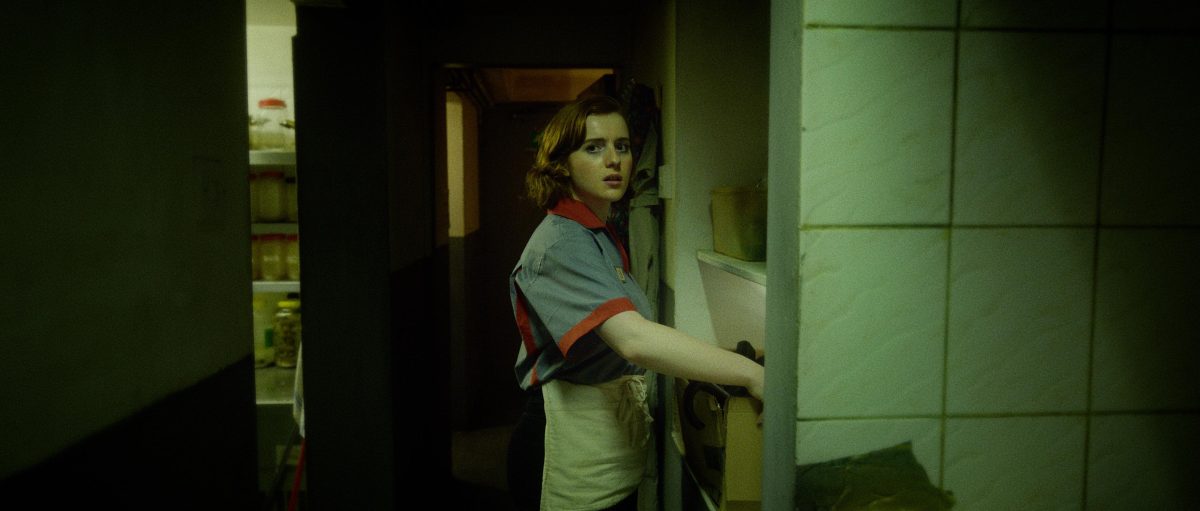
It is in this quiet, almost imperceptible encounter that the film lays bare a radical idea: that intimacy is less about the narrative arc of romance and more about the courage to face the unsaid, to inhabit moments of vulnerability without the compulsion to resolve them, to recognize that longing can be a space to witness, to hold, to understand, and that the act of simply being present for another human being, without explanation, without solution, can itself be a form of love, as deep, as fragile, and as eternal as the unspoken ache that draws Elle and the older woman together in the dying light of a café.
“The Second Time Around” isn’t just a film, it’s a declaration about what cinema can do when it trusts the audience with subtle, human weight. It doesn’t need explosions, contrived plot twists, or grandiose gestures to make you ache; it asks for patience, attention, and emotional honesty. Jack Howard’s shift from comedy to this kind of intimate, almost claustrophobic resonance shows a filmmaker willing to take risks, but it’s also a reminder that risks can be uneven, there are moments where the pacing drags, where the script leans too heavily on repetition, and yet even those flaws feel deliberate, like hesitation is a texture, not a flaw.
Hannah Onslow and Caroline Goodall dominate the screen in ways that are both quiet and radical: their gestures, silences, and glances carry histories that dialogue cannot capture, but sometimes the film flirts with sentimentality, threatening to undercut that precision. Howard’s use of rain, reflections, and dim cafés is brilliant in its insistence on memory’s stickiness, no doubt shimmering like light on wet streets. Yet at times it risks aesthetic indulgence, reminding you that even mastery can flirt with self-consciousness.
The narrative doesn’t tidy grief or neatly resolve longing, and that’s the film’s audacious strength, but for viewers craving momentum, it can feel slow, even punishing. Still, it’s in these very imperfections that the movie becomes insurgent: it refuses trope, refuses closure, refuses to sanitize the messy truths of human connection, insisting that intimacy is found in the pauses, the almost, the unspoken.
It challenges the audience to sit with discomfort, with ambiguity, with vulnerability, an act of radical trust that most contemporary cinema avoids. It lingers not because of spectacle but because it refuses to let you leave unchanged; the lost umbrella, the hesitant smiles, the café’s half-light, these aren’t aesthetic choices, they are instruments for feeling, instruments that make you confront your own regrets, your own unsaid words. I walked away unsettled, aware that the film’s courage is in its restraint, its insistence on imperfection, and its refusal to give easy answers. It is audacious, necessary, flawed, and unforgettable, all at once.



![Dark Blood [2021] Review – Cycle of Fear and Anger comes full circle](https://79468c92.delivery.rocketcdn.me/wp-content/uploads/2021/10/Dark-Blood-2021-768x461.jpg)
![Shazam! [2019] Review: Say The Word This Weekend!](https://79468c92.delivery.rocketcdn.me/wp-content/uploads/2019/04/Shazam_HOF-768x384.jpg)
